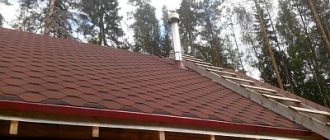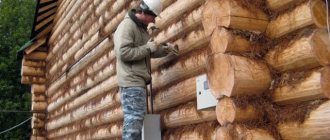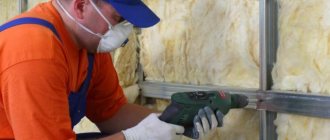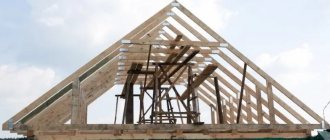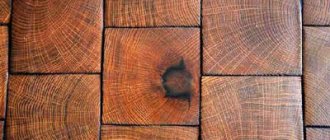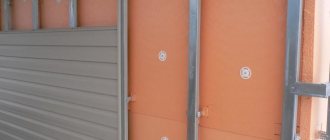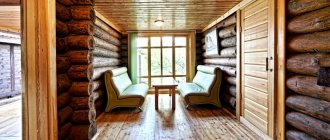A situation where the owner is faced with the task of insulating the roof of a bathhouse can be encountered both during the construction process and during operation .
During construction, everything is determined by the project, but it also happens that “horses are changed in midstream.” And it happens that a bathhouse that is already in good service becomes cold, and there is reason to believe that the reason is a violation of the thermal insulation of the ceiling or roof. In any case, it is worth getting acquainted with the options for what and how you can insulate the roof of a bathhouse.
Preparing for roof insulation
Before you insulate the roof of a bathhouse with your own hands, you should prepare the materials and tools necessary for the work.
To insulate the roof, you must purchase the following materials:
- Reiki. Required for the manufacture of lathing for laying insulating material.
- Vapor barrier. The best option is aluminized film.
- Metallic coated tape.
- Insulation.
Required tools:
- A sharpened knife.
- Jigsaw or wood saw.
- Bulgarian.
- Construction tape.
- Hammer.
- Construction stapler.
- Screwdriver or set of screwdrivers.
- Fastening materials (nails, self-tapping screws, screws).
It is not difficult to prepare everything you need; the main thing is to choose the material that has the best performance properties and is easy to install.
Steam and waterproofing
The first stage when carrying out roof insulation work is treating the structures with antiseptic preparations that prevent wood rotting. To prevent fires, the roof is treated with fire retardant compounds. For waterproofing, membrane films are often used to protect against moisture; the film is laid on the rafters before installing the sheathing, and is intended for vapor barrier between the ceiling insulating material and the ceiling lining. The film material is laid without tension, overlapping with an allowance of 20-25 cm. The film sheets are connected with strips of adhesive tape, due to which there is no stretching, tearing, or deformation when the temperature rises.
Selection of insulation material
In many cases, when creating a roof structure, a serious mistake is made: the differences between a bathhouse and a sauna are not taken into account. The bathhouse has higher humidity compared to a sauna, so moisture and thermal insulation should be made more effective and thorough. Otherwise, steam will not linger in the room.
The range of measures for insulating the roof of a bathhouse with your own hands includes:
- installation of a vapor barrier layer (more details: “Vapor barrier of a bathhouse - selection of material and its installation”);
- laying insulation;
- organization of waterproofing.
You should immediately choose the most suitable insulation for the roof of the bathhouse. First you need to decide what materials will be used: natural and environmentally friendly or produced by industry using modern technologies.
There is a wide variety of roof insulation materials. Penoizol and mineral wool are most often used.
Mineral wool is made from artificial fibers, basalt, limestone and other materials. This thermal insulation material perfectly retains heat in the room and does not support combustion. The disadvantages of this insulation include hygroscopicity.
Ecowool consists of small wood fibers with the addition of antiseptics and fire retardants. The material does not cause any harm to health, has excellent thermal insulation characteristics, and is inexpensive. However, installation must be done using special equipment, which is not very convenient and also increases the cost of thermal insulation.
You can also insulate the roof of the bathhouse with foam insulation. The material is high quality and relatively inexpensive. In addition to the insulation function, it also has the property of sound insulation. Insulation using penoizol is of the highest quality, since it fills even the most inaccessible places.
For insulation, bulk materials such as expanded clay, sand, sawdust, and earth are used. Among them, expanded clay is most often used. There are no problems while working with it.
Natural insulation materials include felt, moss and various materials made from hemp and flax. They are practically not used as independent insulation, only as an additional seal and improve the efficiency of the main insulation material. For example, with red construction moss you can insulate the inter-crown space and seal various cracks. As a rule, a mixture of it with tow and flax fiber is used.
However, natural materials can be damaged by rodents, insects and other pests that settle in them. Therefore, it is recommended to pre-treat the material with special chemical compounds.
Improved materials based on flax fiber and jute are now being produced. The latter can be used for compaction. Jute does not rot, is easily cut into pieces of the desired size, and is available in various forms.
For roof insulation in a bathhouse, the most convenient materials are in the form of slabs, since they are very easy to install. Such materials include polystyrene foam, mineral wool, foam glass and others. They have soundproofing characteristics. One of the disadvantages is that they are not environmentally friendly. For example, polystyrene foam emits substances harmful to the body at very high temperatures, so when using it as insulation in a bathhouse, fire safety issues should be carefully considered.
Thermal insulation is also made using foam glass. This material is a glass mass containing a large number of air bubbles inside. The material is quite fragile, but it does not contain harmful chemicals. The price of foam glass is quite high. It is best to entrust the installation of insulation to professionals, since it is necessary to have certain skills in working with it.
Sawdust can also serve as insulation.
The roof is also insulated with a mixture of straw and clay. This is the cheapest method of thermal insulation. The mixture is prepared as follows: clay and straw are mixed in a 2:3 ratio, a little water is added, everything is mixed well until a homogeneous consistency is formed.
The mixture must be distributed between the beams level with their top level. The mixture will harden in about 3-5 weeks. The time depends on the temperature - the higher it is, the faster the insulation will dry.
It is definitely impossible to answer the question of what is the best way to insulate the roof of a bathhouse. Since his choice is influenced by many factors that must be considered in each specific case.
Insulation: which one is better
We will not say that our opinion is the ultimate truth. The choice of a heat insulator in each specific case is influenced by many factors - what is the construction budget, what materials are easier to get in your area (ecowool is good, but less common than mineral wool), what are the design features of the roof and ceiling.
In addition, bulk materials only imply horizontal surfaces, and do not always have modifications suitable for vertical/sloping ones.
In general, there is nothing new to say. It is optimal (in our opinion) to use expanded clay for floor ceilings, or better yet, expanded vermiculite; for hemmed ceilings , use basalt wool for saunas. But what is the best insulation for a bathhouse roof is more difficult to say, because with a certain adjustment of the shortcomings almost everything is suitable.
Insulation technology
In order for bath procedures to be comfortable, it is necessary to follow the bathhouse roof insulation technology:
- A vapor barrier layer is installed. To do this, you need to purchase special materials. The vapor barrier is attached between the beams. Foil tape is glued to the knocks.
- A sheathing is nailed on top of the vapor barrier. As a rule, the distance between the sheathing bars is 60 cm. However, the dimensions of the selected insulation should be taken into account.
- The insulation is laid or filled in, and there should be no free space left. The thickness of the layer depends on the climatic conditions of the area where the bathhouse is located. Thermal insulation characteristics are directly dependent on the thickness of the layer, that is, the thicker it is, the better the thermal insulation. But there is no need to make the layer excessively thick. In most cases, 15-20 cm is sufficient.
- The cracks should be filled with foam.
- Thermal film or polyethylene is spread over the thermal insulation. A waterproofing layer is required; if it is missing, the insulation will quickly become unusable. The film is fixed using a construction stapler.
- The ceiling is sheathed with finishing material. The best option is eurolining, but you can also use regular boards.
Here is a general plan of action for insulating the roof of a bathhouse. The insulation technology can be changed depending on the type of ceiling structure.
Methods
Insulation of the attic floor in the bathhouse must be done in any case. It is this element that is the last line that traps heat inside and prevents the penetration of cold air. There are three methods of thermal insulation - hemming, flooring, panel.
Grazing
A simple method that is suitable for inexperienced builders. To complete it you need a small amount of building materials. Floor ceilings cannot be installed in rooms whose width exceeds 2.5 meters. The flooring should rest only on load-bearing walls, and not partitions.
Laying features:
- The maximum distance between load-bearing walls is 2.5 meters.
- The minimum thickness of the boards is 50 mm. They must be of high quality, free from cracks, knots, and rot.
- Before nailing the boards, they need to be sanded and coated with an antiseptic.
Flooring assembly process:
- Attach the prepared boards to the wall beams.
- Lay a vapor barrier film and attach it with a stapler.
- Lay mineral wool in rolls or slabs.
You can make homemade insulation - sew flat bags from waterproof fabric, fill them with padding polyester, foam rubber, red moss or dry pine needles.
When installing a floor ceiling, the attic cannot be used as a room.
Hemmed
Build process:
- Cut the lumber to the required size, correct any unevenness, and coat it with a protective antiseptic.
- Since stove equipment that runs on solid fuel is often installed in bathhouses, it is necessary to consider the location of the chimney. Install a special sleeve in the selected location. You can make it yourself from metal sheets or buy a finished product at a hardware store.
- Secure the vapor barrier film over the ceiling beams. Fix the individual sheets overlapping each other, with an overlap of 10 cm. It is recommended to seal the seams with metal tape.
- Hem the ceiling with pre-treated boards.
- Secure the foil insulation, which is nailed down with slats.
- On top of the vapor barrier film, which runs along the ceiling beams, make a wooden frame from 50x50 mm bars.
- Insert mineral wool slabs into the sections.
- Install a vapor barrier membrane. Cover it with slats to create a ventilated gap.
You can fix the lining on top of the slats.
Panel
Build process:
Panel thermal insulation involves the assembly of a massive panel. Its base is two beams measuring 50x100 mm. Place the bars on the floor in front of you, leaving a distance of 50 cm between them. Align the edges in one straight line. Prepare the boards, cut them 60 cm long. One edge should protrude 50 cm
It is important to choose boards of the same thickness (25–30 mm). Make a shield. Attach a vapor barrier film to the inside of the structure. Place mineral wool on top of the film, tightly to each other.
Several such panels need to be prepared to insulate the entire ceiling. The finished structures are laid out on top of the last crown. The modules are connected by jumpers. They are attached to the crown with self-tapping screws.
On top of the finished flooring, it is necessary to lay another layer of vapor barrier and fill the slats to create a ventilation gap.
Insulation of a suspended ceiling
In order to insulate a suspended ceiling, you must perform the following steps:
- The boards are attached to the floor beams.
- Vapor barrier material in 2 layers is spread on the boards from the attic side. You can use roofing felt or glassine.
- Then the selected insulation is installed (read: “How to insulate the ceiling in a bathhouse correctly - do-it-yourself insulation options”).
- The insulation must be covered with waterproofing material. Polyethylene film is suitable for these purposes.
- The plank flooring is being laid. This will allow you to walk on the attic floor without damaging the insulation.
A ceiling of this design is the easiest to construct and subsequently arrange.
Insulation of a flat ceiling
This ceiling structure is erected without the use of beams. In this case, the boards are laid on the trim or top rims. If the bathhouse has an attic, then this type of ceiling would be an excellent option. In addition, it is the cheapest and easiest to install. Read also: “How to make a ceiling in a bathhouse with your own hands - a step-by-step guide from a master.”
With this ceiling arrangement, the thermal insulation material on the roof side remains open, so the attic cannot be used. And another disadvantage is the need to change the insulation when carrying out any repair work.
Thermal insulation is carried out as follows:
- A thick layer of clay is laid on the ceiling boards. The clay must dry completely.
- Insulation is laid on top of the clay.
- Next, you need to make a box around the perimeter of the attic, which will act as a fence. A layer of loose vapor barrier is placed on top of the insulation.
A mixture of wood chips and cement can be used as insulation. Using this material, you can fill absolutely all hard-to-reach places and, as a result, obtain excellent quality thermal insulation.
Application area
This insulation can be used on almost any roof - old, new, damaged, on the roof of an industrial enterprise or residential building of various storeys. Due to the light weight of the material, it can be poured onto a light floor (wood, corrugated board). It is thanks to the relative “weightlessness” that experts recommend the use of foam concrete as thermal insulation during roof reconstruction, for old floors (depending on how much load they can withstand). Foam concrete is also indispensable for arranging or rebuilding complex structures with abutments and several slopes. Another advantage of cellular concrete is that the surface for pouring it does not need to be specially leveled. The material itself will fill all the roughness.
Using foam concrete reduces labor costs for roofing. It is supplied to the roof with hoses (maximum height - up to thirty meters) from a special installation located on the ground (capacity - up to 15 cubic meters per hour). In this case, there is no need to gradually lift and distribute thermal insulation in batches, as happens when using other materials. If it is necessary to carry out work at an elevation above the stated thirty meters, compact equipment can be located closer to the place of work - only the raw materials themselves will need to be delivered there.
Note. The thickness of the layer is determined by thermal technological calculation (on the Internet you can find elementary formulas, tables with thermal conductivity coefficients of certain materials, online calculators).
After the pouring is completed, the foam concrete is allowed to harden. After 24 hours you can walk on it on a flat roof. After a week to ten days (this depends on the outside temperature), it is treated with a primer, waterproofing is glued or fused, and a roofing carpet can be laid on top (it can be anything, the choice, in particular, depends on the operational requirements, the desires of the building owners, etc. similar).
Thermal insulation of panel ceiling
To carry out insulation of a panel ceiling, you must have some experience and skills. One of the advantages of such a ceiling is that the individual panels of the structure are made outside the bathhouse.
The work is performed in the following order:
- Shields of the required sizes are manufactured.
- The finished sections are mounted on the ceiling. It will not be possible to do this alone, since the panels will be quite heavy and large. Therefore, it is necessary to involve several assistants in the work.
- Then the vapor barrier is spread.
- Insulation material is laid.
A few more recommendations
Where the chimney passes through the roof, only non-combustible insulation materials can be used. The chimney must be lined with refractory bricks.
The attic of the bathhouse must be ventilated; for this purpose, it is necessary to have dormer windows.
Waterproofing must be done on both sides, that is, on the steam room side to protect the insulation from steam and on the roof side from precipitation.
To obtain reliable, durable and effective thermal insulation, it is necessary to follow all the recommendations and sequence of work for insulating the roof of the bathhouse.
The use of expanded clay in construction work
Expanded clay is used for the preparation of dry mixtures used in the insulation of foundations, walls and ceilings during the construction of various buildings, including buildings of bathhouse complexes.
Using a layer of expanded clay-based heat insulator, which has a thickness of 100 to 150 mm, can reduce heat loss by 70%. The insulation is ideal for filling hard-to-reach cavities in which it is impossible to install other heat-insulating building materials. It is capable of creating a very high-quality heat-insulating layer that will perform its functions for a long time and prevent heat loss.
In some cases, a mixture of expanded clay and polystyrene foam can be used to insulate the roof of a bathhouse. This mixture isolates the room from the external environment much more effectively than in the case of using mineral wool. A mixture of expanded clay and polystyrene can significantly reduce thermal energy losses and save on fuel consumption when heating the bath complex.
When purchasing building materials for insulation, it is necessary to take into account the degree of shrinkage, the coefficient of which is 1.15. 1 m3 contains about 20 bags of expanded clay. Possessing a high degree of fire resistance, this type of insulation does not change its stability when sudden temperature changes occur. Easily able to tolerate both severe frost and high temperatures. Very often the material is used as insulation in areas with harsh climatic conditions.
In order to properly insulate the bathhouse premises, care should be taken to insulate not only the ceiling, but also the floor of the premises.
A good effect from the use of expanded clay is felt when using a layer of insulation of at least 100 mm.
